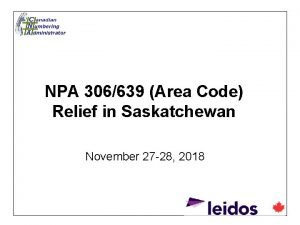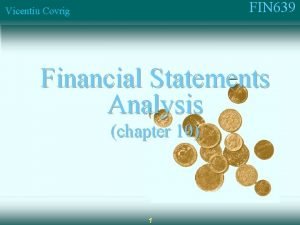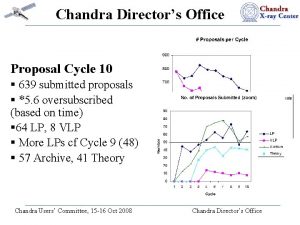CS 639 Data Management for Data Science Lecture





















































- Slides: 53

CS 639: Data Management for Data Science Lecture 24: Data Vizualization [based on slides by John Canny] Theodoros Rekatsinas 1

2

John Snow Hypothesis at the time: Diseases such as cholera and bubonic plague are caused by pollution or a noxious form of "bad air”. John Snow’s Research: The source of the outbreak was the public water pump [On the Mode of Communication of Cholera]

How did he do it? Death/Survival in cholera in 19 th century London by district and water company. 4

How did he do it? Snow's data visualization study is regarded as the founding event of the science of epidemiology. 5

Charles Joseph Minard 1869 Napoleon’s March According to Tufte: “It may well be the best statistical graphic ever drawn. ” 5 variables: Army Size, location, dates, direction, temperature during retreat https: //news. nationalgeographic. com/2017/03/charles-minard-cartography-infographics-history/

Interactivity to Educate • The famous Gapminder Video, Hans Rosling: 200 Countries, 200 Years, 4 Minutes • https: //www. youtube. com/watch? feature=player_embedded&v=jbk. SRLYSojo

Outline Visualization: • Some great examples • Some counter-examples • Principles for Visualization Design • Visualization Toolkits preview

Some Anti-Examples • Courtesy of WTFViz. net

Visualization to Educate? from wtfviz. net

Pie in the Sky? from wtfviz. net

from wtfviz. net

Needs Fixing from wtfviz. net

Outline Visualization: • Some great examples • Some counter-examples • Principles for Visualization Design • Visualization Toolkits preview

Visualization Definitions • “Transformation of the symbolic into the geometric” [Mc. Cormick et al. 1987] • “. . . finding the artificial memory that best supports our natural means of perception. ” [Bertin 1967] • “The use of computer-generated, interactive, visual representations of data to amplify cognition. ” [Card, Mackinlay, & Shneiderman 1999]

Uses for Data Viz A: Support reasoning about information (analysis) • • Finding relationships Discover structure Quantifying values and influences Should be part of a query/analyze cycle B: Inform and persuade others (communication) • Capture attention, engage • Tell a story visually • Focus on certain aspects, and omit others

Uses for Data Viz

Principle 1 • Simplify ! 18

Chart Design: Simplifying • Example from Tim Bray 19

Chart Design: Simplifying • Example from Tim Bray 20

Chart Design: Simplifying • Example from Tim Bray 21

Chart Design: Simplifying • Example from Tim Bray 22

Chart Design: Simplifying • Example from Tim Bray 23

Chart Design: Simplifying • Example from Tim Bray 24

Principle 1: Simplify • Tables and charts • Reduce chartjunk/tablejunk; increase data-ink ratio • Lessons from perception: Limit the number of objects displayed at once • Beware: • Gratuitous 3 D • Shadows • Gratuitous animation • How do you tell if a feature is gratuitous? Ask whether using it reveals more information. 25

Interactive Chart Design: Simplifying • With interactive charts you can keep things very simple by hiding and dynamically revealing important structure. • On an interactive chart, you reveal the information most useful for navigating the chart. 26

Principle 2: Understand Magnitudes Which is brighter?

Principle 2: Understand Magnitudes (128, 128) (144, 144) Which is brighter?

Just Noticeable Difference • JND (Weber’s Law) • Ratios more important than magnitude • Most continuous variations in stimuli are perceived in discrete steps

Steven’s Power law S = sensation I = intensity p < 1 : underestimate p > 1 : overestimate [graph from Wilkinson 99, based on Stevens 61] [alternate graph : http: //www. undergrad. ahs. uwaterloo. ca/~wchedder/stevenspowerlaw. htm]

Compare area of circles

Compare area of circles

Principle 2: Understand Magnitudes Most accurate Position (common) scale Position (non-aligned) scale Length Slope Angle Area Volume Least accurate Color hue-saturation-density

Principle 3: Use Color • Choose colors based on the information you want to convey • Sequential • Diverging • Categorical • Use online resources to discover and record your color schemes • Color Brewer • Kuler • Colour Lovers • Where possible, use your organization’s palette 34

Principle 3: Use Color • Color 35

Principle 3: Use Color • Color 36

Principle 3: Use Color • Color 37

Principle 3: Use Color • Color 38

Principle 3: Use Color • Color 39

Principle 3: Use Color • Color 40

Principle 4: Use Structure • Gestalt Psychology principles (1912): Source http: //blog. fusioncharts. com/2014/03/how-to-use-the-gestalt-principles-for-visual-storytelling-podv/ 41

Principle 4: Use Structure (but not like this) 42 Source https: //www. vocalabs. com/blog/my-dashboard-pet-peeve

Principle 4: Use Structure 43 Source https: //www. vocalabs. com/blog/my-dashboard-pet-peeve

Chart Selection – Andrew Abela

Chart Selection – Juice Analytics

Data Viz in the Sciences

A case for Ugly visualizations People instinctively gravitate to attractive visualizations, and they have a better chance of getting on the cover of a journal. But does this conflict with the goals of visualization? : • Rapid exploration • Focus on most important details • Easy and fast to develop and customize e. g. Powerpoint vs Keynote

Outline Visualization: • Some great examples • Some counter-examples • Principles for Visualization Design • Visualization Toolkits preview

Interactive Toolkits: D 3 Without Doubt, the most widely used interactive visualization framework is D 3, developed around 2011 by Jeff Heer, Mike Bostock and Vadim Ogievetsky. Note from the authors: D 3 is intentionally a low-level system. During the early design of D 3, we even referred to it as a "visualization kernel" rather than a "toolkit" or "framework"

Interactive Toolkits: Vega is a “visualization grammar” developed on top of d 3. js It specifies graphics in JSON format.

Interactive Toolkits: Vincent is a Python-to-Vega translator. Trivia question: why is it called Vincent? Hint: Vincent+Vega= ?

Interactive Toolkits: Vincent is a Python-to-Vega translator. Trivia question: why is it called Vincent? Hint: Vincent+Vega= ?

Bokeh: Another Interactive Viz Library Bokeh is an independent Viz library focused more heavily on big data visualization. Has both Python and Scala bindings.
 639 area code
639 area code Subsisir
Subsisir I-fss-639
I-fss-639 Qnap ts-639 pro
Qnap ts-639 pro Ctbc 639
Ctbc 639 Nevada controlled substance list
Nevada controlled substance list 01:640:244 lecture notes - lecture 15: plat, idah, farad
01:640:244 lecture notes - lecture 15: plat, idah, farad What's your favourite school
What's your favourite school Physical science lecture notes
Physical science lecture notes Formuö
Formuö Novell typiska drag
Novell typiska drag Tack för att ni lyssnade bild
Tack för att ni lyssnade bild Vad står k.r.å.k.a.n för
Vad står k.r.å.k.a.n för Varför kallas perioden 1918-1939 för mellankrigstiden
Varför kallas perioden 1918-1939 för mellankrigstiden En lathund för arbete med kontinuitetshantering
En lathund för arbete med kontinuitetshantering Adressändring ideell förening
Adressändring ideell förening Tidbok yrkesförare
Tidbok yrkesförare Anatomi organ reproduksi
Anatomi organ reproduksi Vad är densitet
Vad är densitet Datorkunskap för nybörjare
Datorkunskap för nybörjare Boverket ka
Boverket ka Debatt mall
Debatt mall Delegerande ledarskap
Delegerande ledarskap Nyckelkompetenser för livslångt lärande
Nyckelkompetenser för livslångt lärande Påbyggnader för flakfordon
Påbyggnader för flakfordon Vätsketryck formel
Vätsketryck formel Publik sektor
Publik sektor Bo bergman jag fryser om dina händer
Bo bergman jag fryser om dina händer Presentera för publik crossboss
Presentera för publik crossboss Vad är ett minoritetsspråk
Vad är ett minoritetsspråk Bat mitza
Bat mitza Treserva lathund
Treserva lathund Epiteltyper
Epiteltyper Claes martinsson
Claes martinsson Cks
Cks Verifikationsplan
Verifikationsplan Bra mat för unga idrottare
Bra mat för unga idrottare Verktyg för automatisering av utbetalningar
Verktyg för automatisering av utbetalningar Rutin för avvikelsehantering
Rutin för avvikelsehantering Smärtskolan kunskap för livet
Smärtskolan kunskap för livet Ministerstyre för och nackdelar
Ministerstyre för och nackdelar Tack för att ni har lyssnat
Tack för att ni har lyssnat Hur ser ett referat ut
Hur ser ett referat ut Redogör för vad psykologi är
Redogör för vad psykologi är Borstål, egenskaper
Borstål, egenskaper Atmosfr
Atmosfr Borra hål för knoppar
Borra hål för knoppar Orubbliga rättigheter
Orubbliga rättigheter Standardavvikelse formel
Standardavvikelse formel Tack för att ni har lyssnat
Tack för att ni har lyssnat Rita perspektiv
Rita perspektiv Ledningssystem för verksamhetsinformation
Ledningssystem för verksamhetsinformation Tobinskatten för och nackdelar
Tobinskatten för och nackdelar Blomman för dagen drog
Blomman för dagen drog













































































